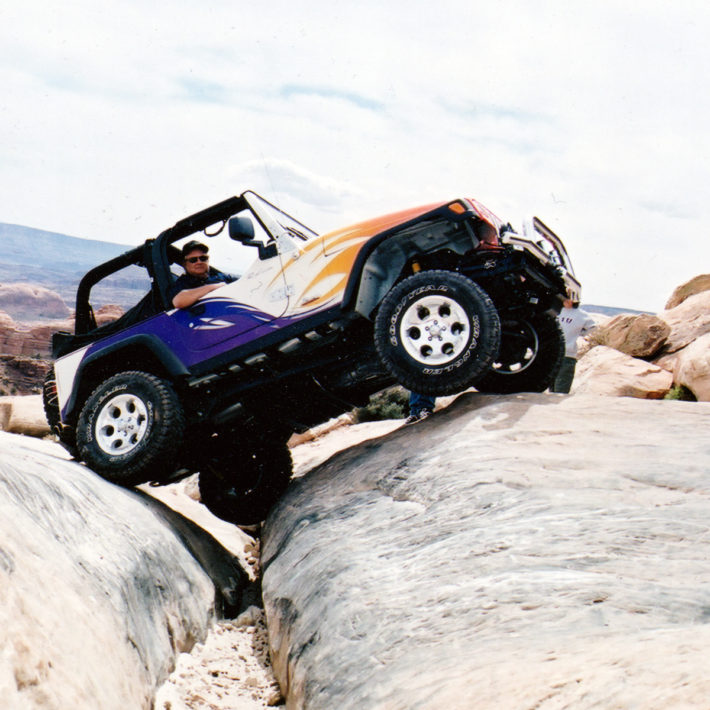Though the famous "Golden Crack" at Moab Utah is an extreme case compared to what most people will encounter, sometimes a bit of exaggeration goes a long way to make the point. As you can see in the picture, the driver of this rather colorful Jeep has approached the crack at an angle so that he never has more than one tire in the crack at a time. This means that even if the depth of the crack is deeper than his suspension can travel he still has three tires making contact with the ground, so he still has good traction. It also means he never has to deal with the resistance of pulling more than one tire out of the crack at a time, and by turning into the crack slightly as the first tire drops in he can reduce the chance of planting his front bumper on the opposite bank. The same technique applies to any ditch crossings you may have to do.
This video shows the Herd Of Turtles 4x4 Club crossing the Golden Crack. Note how the vehicles with less wheel travel are not as stable as vehicles with more wheel travel.
(YouTube will offer similar videos afterwards, click replay to see this video again)
[embedyt] http://www.youtube.com/watch?v=nxNBPf4eUlQ[/embedyt]
Crossing berms uses the same technique, except that part of the goal is avoiding high-centering your vehicle. As with ditches, approach at an angle so you never have to do the hardest climb with more than one tire at a time. Once your front tires are up on the berm then being at an angle has the added advantage that it effectively shortens your wheelbase, making it less likely that you will drag your belly. If you find you are playing teeter-totter on top of the berm with two opposite tires in the air then just accelerate slightly before you hit the highest point of the berm so your momentum will rock you over.
A bit of experimentation is required to find the best angle for your vehicle to cross ditches and berms, however if you have the room then 30 degrees is a good place to start.
It is common practice to mark a road as unmaintained by placing a ditch and berm across its entrance, but sometimes you will go onto a trail only to find literally dozens of ditches and berms as you travel along it. The reason is to control erosion. Once a road is no longer maintained it can quickly become the path of least resistance for water, turning the road into a creek. This can divert water from streams and ponds where it is needed, wash dirt into clean water sources, or even cause major mudslides. Resist the urge to drive off the road to bypass the berms. By doing so you can negate their purpose and start a cycle of erosion.
In some cases the road will actually be "reclaimed", meaning the surface is torn up and the natural slope is reestablished. If this has been done then it is no longer considered a road and is not for motorized use.


